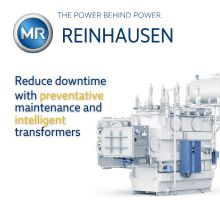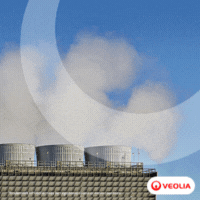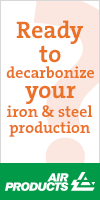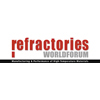ThyssenKrupp Steel Europe to Produce 70 millionth Tonne on Schwelgern BF 2
02/06/2012 - The 540-strong crew of ThyssenKrupp Steel Europe’s blast furnace Schwelgern 2 in Duisburg — still in its first campaign — has been preparing to celebrate production of its seventy millionth ton of hot metal.
The 540-strong crew of ThyssenKrupp Steel Europe’s blast furnace Schwelgern 2 in Duisburg — still in its first campaign — has been preparing to celebrate production of its seventy millionth ton of hot metal.
The Schwelgern blast furnace, which went into operation in autumn 1993, is Europe’s largest blast furnace and one of the biggest of its kind in the world.
“Our blast furnace 2 is very cost-effective and environmentally friendly and has been producing very high-quality hot metal for the two BOF melt shops Bruckhausen and Beeckerwerth for 19 years,” explained Wolfgang Wiese, head of the Schwelgern blast furnace plant. “With the iron produced so far you could build almost 3000 copies of Cologne’s famous Hohenzollernbrücke Bridge – this steel monument is more than 400 meters long and nearly 30 meters wide.”
The 90 meter tall Schwelgern 2 blast furnace has a capacity of 5513 m3, hearth diameter of 14.9 meters, 42 tuyeres and four tap holes. It produces around 12,000 tonnes of hot metal a day that is transported in refractory vessels by rail to one of two BOF melt shops and further processed into high-quality crude steel. The steel is subsequently used to make car parts or domestic appliances such as washing machines and dishwashers.
In addition to its 12,000 tonnes of hot metal per day, the blast furnace also produces around 3300 tonnes of ground granulated blast furnace slag/day for cement manufacture, and around 12,000,000 m³ top gas/day for use in the mill’s energy network.
ThyssenKrupp Steel Europe operates four blast furnaces at its site in Duisburg that produce around 11.5 million tonnes of hot metal a year. Blast furnace Schwelgern 2 was put into operation in 1993 after ThyssenKrupp had gained a wealth of experience in building blast furnace 1, the world’s first large blast furnace.
“Blast furnace 2 has an extremely sophisticated design in terms of its refractory lining and furnace cooling system, and it’s still state-of-the-art today,” said Wiese. “The first reline is scheduled for summer next year, and the preparations are already in full swing.”



-(1)-Reinhausen-(1).jpg?lang=en-US&ext=.jpg)






